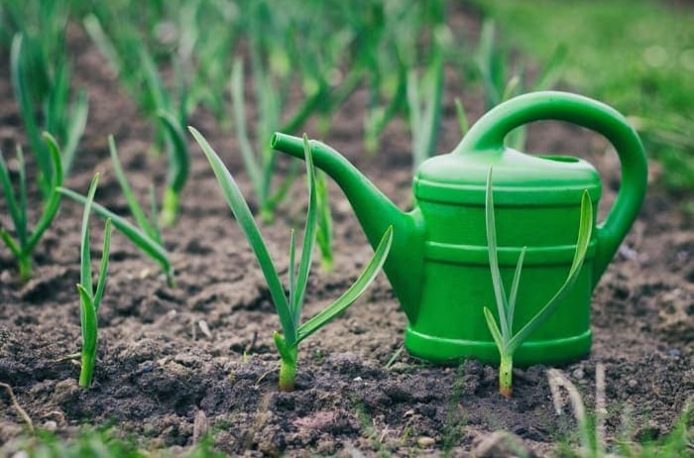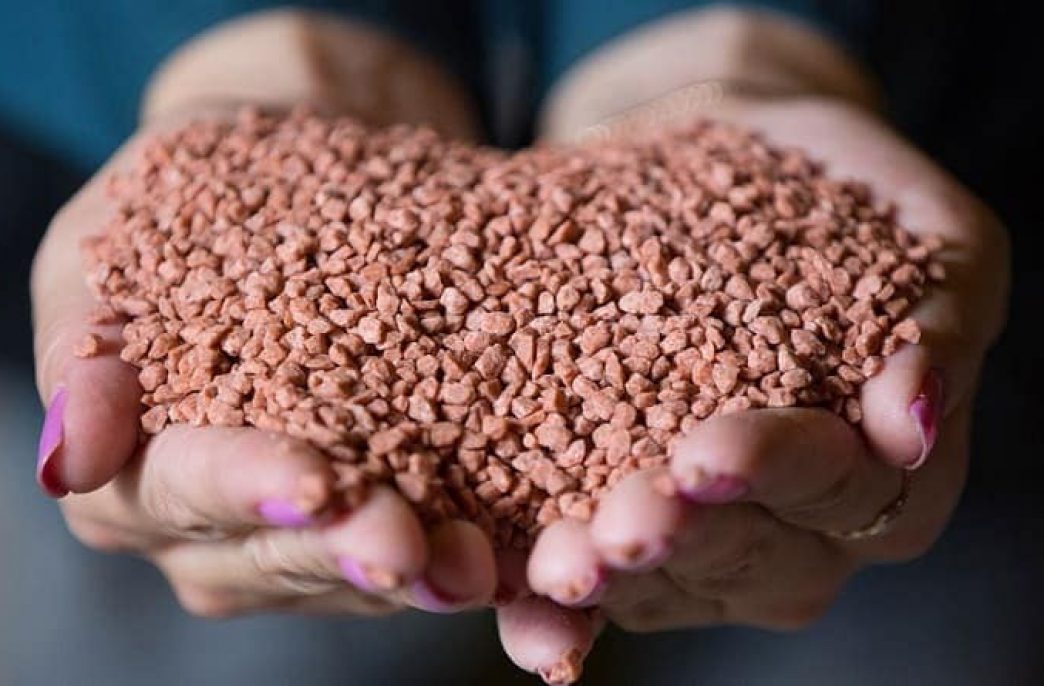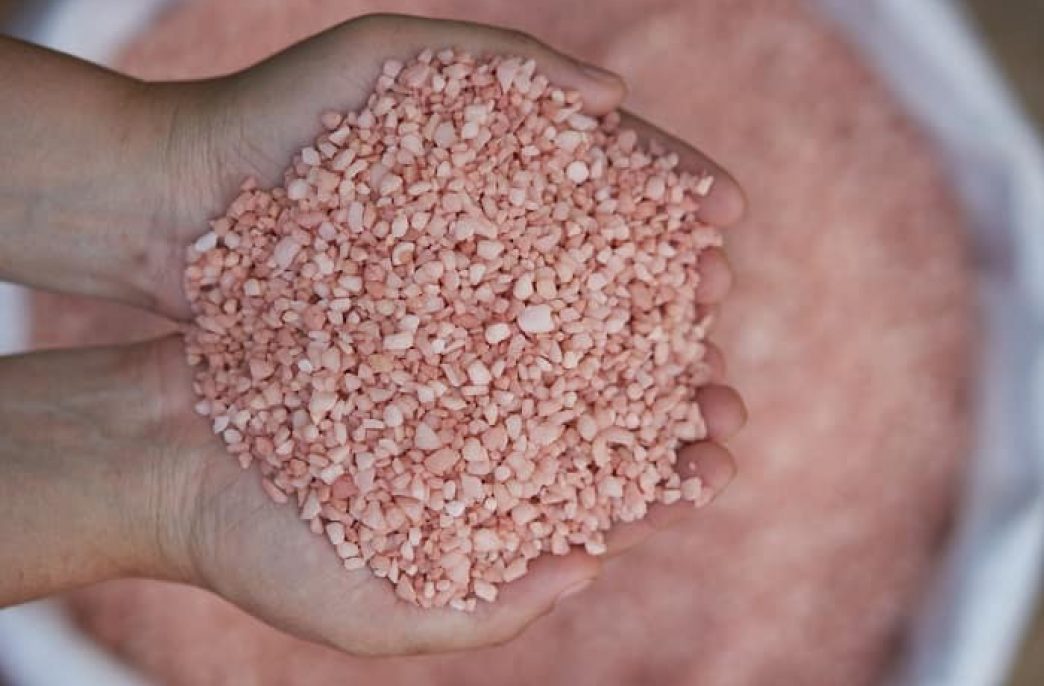Top dressing of garlic in spring

Fertilizers for garlic in the spring are applied not only in order to increase the yield of the crop, but also to improve its taste. The peculiar aroma and taste are the qualities for which the plant is loved all over the world. Gardeners attribute it to unpretentious plants, for which weeding, watering and loosening the soil is enough. Even with this care, you can get a good yield. But sometimes standard measures are not enough. If the leaves become pale or yellowish, become covered with dots, then it’s time to think about choosing a spring fertilizer for garlic with the missing trace element.
The main signs of problems are:
the tips of feathers dry out ahead of time, which signals a lack of nitrogen. You can fix the problem with ammonium nitrate;
most of the foliage turned yellow, which indicates an increased acidity of the soil. You can verify this using a universal indicator. Crushed limestone or dolomite flour sprinkled between the rows will help neutralize the acidity to the desired level;
pale green leaves indicate a potassium deficiency. Wood ash will save the day;
if there is enough light, but the plant grows slowly, there may be a lack of nutrients. It is worth picking up organic matter or minerals with nitrogen.
What fertilizers are best used for seasonal feeding

Mineral
To grow a plant on poor soil, mineral supplements with potassium, nitrogen, phosphorus and other useful components are needed. The choice of fertilizers for garlic in the spring to increase yields and protect against disease boils down to the following:
urea as a nitrogen source in large quantities. It is necessary in early spring when the plant is actively growing greenery. The solution is prepared from 1 tbsp. l. urea and 10 liters of water. Stir until completely dissolved and watered at the rate of 3 liters per 1 m2;
ammonium nitrate, which also contains a lot of nitrogen. For the first feeding of winter garlic, use a solution of 10 liters of water and 15 g of saltpeter. The consumption is the same as for urea. It is advisable to repeat the treatment after 3 weeks;
superphosphate will enrich the plant with phosphorus necessary for photosynthesis. The heads will be juicy and large, withstand winter storage. For 10 liters of water, take 2 tbsp. l. superphosphate. The prepared volume is sufficient for processing a 2 m2 bed;
nitroammofoska contains potassium, sulfur, nitrogen and phosphorus. Can be used in place of superphosphate and nitrogen reapplication. In 10 liters of water dissolve 2 tbsp. l. nitroammophos. If foliar application is planned, the concentration is halved.
Natural
Those who are afraid of chemistry use natural remedies to feed garlic: top dressing in spring with organic matter gives good results. Manure, as a nitrogen source, has a beneficial effect on the growth of young shoots. Experienced gardeners recommend not getting carried away with organic matter, especially bird droppings. It can burn the bulbs. It is better to use it in the fall when processing the area where the plant will be planted in spring. The mullein is less aggressive. It is diluted in a 1: 7 ratio and applied exclusively at the root.
Compost increases soil fertility. Food waste compost has an especially good effect on the soil. It is scattered over the beds before digging or added to the rows for planting.
Ash is a source of phosphorus and potassium, useful at any stage of plant development. Can be applied up to 4 times per season. There are several processing options – sprinkle powder between the rows or prepare a solution for root watering. Powder the plants will increase protection against common diseases and pests.
Ways to Add Beneficial Supplements
If winter garlic is grown on the beds, top dressing is carried out in the spring as soon as the snow melts. During the season, the plant must be processed three times:
Stimulating the growth of the green part, activating the plant. Manure and nitrogen supplements work well.
After 2 weeks, you need to re-enrich the soil with microelements. In addition to nitrogen, phosphorus is involved. Both elements are needed for photosynthesis. Use mullein solution or nitroammofosk.
The introduction of substances that allow you to get beautiful large bulbs. Processing falls at the end of June. Superphosphate and other mixtures with phosphorus are used. Ash can be added to superphosphate at the rate of 200 g per 10 liters of solution.
During the spring feeding of winter garlic, the terms and recommendations for replenishing the deficiency of nutrients should be observed.
Features of the use of solutions and granules

Regardless of the composition and concentration of the substances with which the soil is treated, there are general recommendations for increasing the yield, according to which garlic dressing in spring is carried out as follows:
liquid formulations are carefully poured under the root, without touching the leaves and stems in order to avoid burns. Use a narrow-nosed watering can;
dry substances are distributed between rows, without touching the ground part of the plants, and then watered abundantly;
when using solutions, preliminary watering is not carried out, since the culture does not like waterlogged soil;
the watering solution should not be cold or hot, otherwise it will shock the plant. The best option is to focus on the air temperature;
ready-made solutions are used no longer than a day from the moment of preparation, since ultraviolet light and oxygen provoke chemical reactions;
do not limit yourself exclusively to mineral supplements or organic matter, competent alternation will give the desired result.
Spraying is the only way to deliver nutrients in a rainy season, since the plant does not like waterlogged soil. The concentration of the irrigation solution is reduced significantly to avoid burns of the green part. The procedure is carried out in the evening or in the morning, when there are no scorching rays of the sun. Irrigation is not a substitute for root supplements, but is a useful supplement when micronutrients are deficient. If you add to the above, timely loosening and weeding, the harvest will be plentiful and of high quality.
Basic rules for feeding garlic in spring

Top dressing of garlic with organics and minerals is carried out taking into account the vegetation stage, soil condition and ambient temperature. From the beginning of spring, planting garlic is freed from shelter, and the soil is gently loosened. Further, watering is organized by dissolving 20 drops of iodine in 5 liters of water. Moistening with an iodine solution will enrich the soil, reduce the risk of plant damage by fungal diseases.
The beginning of the vegetative period is accompanied by a violent growth of stems and leaves. Bulb formation occurs later, by about 8-10 leaves. To prevent yellowing of the stems and stimulate the growth of greens, you will need a nitrogen supplement for garlic. Processing is carried out 2 times when:
sprouts will hatch;
about 6 leaves will grow.
What fertilizers are suitable for growing winter garlic
When choosing how to feed garlic in spring, use organic compounds or mineral fertilizers from the following list:
slurry diluted with water in a ratio of 1:10;
water mixed with ammonia at a dosage of 10 liters and 1 tbsp. l .;
urea (1 tablespoon per bucket of water);
nitroammofosk (2 tablespoons per bucket of water).
The first dressing of garlic is performed with urea, the second – with nitroammophos. Considering that the roots of the plant do not lie very deep in the soil, it is better to shed the grooves prepared in advance with a useful solution. They can be made easily if you walk with a hoe along the rows with plantings. After watering with a working solution, the grooves are added dropwise. Water the beds well before using the fertilizer.
The choice of fertilizer depends on the temperature conditions. If the day is not hotter than +14, and at night the temperature drops to zero, you should choose ammonium nitrate. Urea is added in warm weather, since nitrogen is better absorbed at high temperatures.
When using ammonia, you should remember about its rapid evaporation, so the fertilizer for garlic is prepared immediately before processing.
For organic fertilizing during planting, you can use compost or rotted manure. Such fertilizers are distributed between the rows so that after watering the useful elements are absorbed into the soil.
Gardeners also use an ash solution prepared from 200 g of powder and 10 liters of water. Ash does not contain nitrogen, but it contains a lot of other useful microelements – sulfur, magnesium, potassium, silicon, boron, iron, etc.
Competent dressing of garlic in summer

If in May garlic needs to build up greens and gain growth, then in summer the time for the formation of fruits (seeds, tubers) comes. In order for all stages of the growing season to occur on time, the plant needs to be helped by fertilizing with potassium and phosphorus. If you do not switch to these fertilizers in time, the garlic will continue to grow feathers, the heads will be loose and small, and such a crop will not last long. In addition to phosphorus-potassium fertilizers, it is advisable to feed the garlic with trace elements. They will enhance immunity and improve plant development.
How foliar feeding is carried out
With the help of foliar feeding, the plant immediately receives useful substances. The effect of the fertilizer is short-lived, but effective. Garlic leaves can be poured from a watering can through a sieve or sprayed with a growth stimulant. The choice is offered by “Epina”, NV-101, “Energena” and others. You can use one of the complex formulations (“Fertika Luxi”, etc.).
Foliar top dressing is relevant during a cold snap, when the temperature drops to +10 degrees. Also, treatment is needed during drought and heat and in the absence of the ability to carry out standard root watering. It is imperative to spray against diseases and pests.




